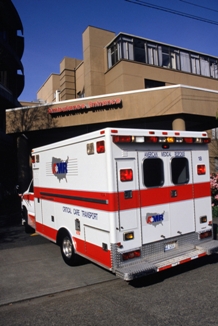| For Covered EntitiesThe Privacy Rule applies only to covered entities. Individuals, organizations, and agencies that met the definition of a covered entity under HIPAA must comply with the Privacy Rule's requirements to protect the privacy of health information and must provide individuals with certain rights with respect to their health information. If an entity is not a covered entity, it does not have to comply with the Privacy Rule.
A Covered Entity is one of the following:A Health Care Provider | | A Health Plan | | A Health Care Clearinghouse | This includes providers such as: - Doctors
- Clinics
- Psychologists
- Dentists
- Chiropractors
- Nursing Homes
- Pharmacies
...but only if they transmit any information in an electronic form in connection with a transaction for which HHS has adopted a standard. | | This includes: - Health insurance companies
- HMOs
- Company health plans
- Government programs that pay for health care, such as Medicare, Medicaid, and the military and veterans health care programs
| | This includes entities that process nonstandard health information they receive from another entity into a standard (i.e., standard electronic format or data content), or vice versa. |
|  | | | View an easy-to-use question and answer decision tool. |
 | Guidance Materials for Small Providers, Small Health Plans, and other Small Businesses | | View materials about the Privacy Rule for small providers, small health plans and other small businesses. |
Guidance Materials for Covered Entities | Summary of the Privacy Rule-This is a summary of the key elements of the Privacy Rule, including who is covered, what information is protected, and how covered entities can use and disclose protected health information.
| Guidance on Significant Aspects of the Privacy Rule-A collection of documents explaining many provisions of the Privacy Rule including business associates, special topics such as disclosures for public health and research, and incidental uses and disclosures.
| Fast Facts for Covered Entities-Answers to many common questions and misconceptions about patient consent, incidental disclosures, child abuse reporting, electronic media, and other disclosures.
| | Provider Guide: Communicating With a Patient's Family, Friends, or Other Persons Identified by the Patient-This is a guide for health care providers to help them determine when they can disclose a patient's health information to the patient's family, friends, or other identified by the patient. |
Sign Up for the OCR Privacy Listserv-OCR has established a listserv to inform the public about Privacy Rule FAQs, guidance, and technical assistance materials as they are released.
Back to Top
|
|















